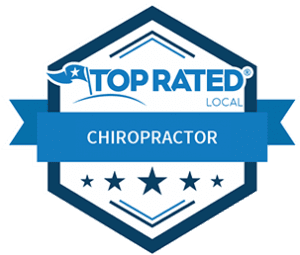7 Common Dry Needling Questions Answered
A brief history of Dry Needling
The term “Dry Needling” has only been around since 1979 when a Czech physician named Karl Lewit discovered positive outcomes when treating patients with steroid injections, only he didn’t actually inject the medication. He simply used the dry needle at the targeted area and knew there was something else going on. The technique evolved from there, so we wanted to cover the 7 most common questions around dry needling.
1. What is dry needling?
Dry needling is the practice of inserting filiform needles into an active “trigger point” without injecting any liquid medication into the body.
The practice of dry needling is used to stimulate the healing process for soft tissue injuries. Patients often experience pain and discomfort from tight muscles and have limited success using other methods to release this tension. The human body has “trigger points” which we often refer to as “knots” and are usually painful when pressed on. This technique often provides an instant sense of relief to the localized knot.
2. What’s the difference between acupuncture and dry needling?
The similarities between acupuncture and dry needling are abundant, however, the main difference is the insertion point of the dry needle itself. While the dry needling technique is inserted into trigger points, acupuncture has specific “ashi” points, derived from an old Chinese philosophy that claims all trigger points refer back to. Acupuncture is generally used for treating a range of both physical and psychological issues.
When we approach this from a modern western point of view, dry needling is gaining the research backing of its effectiveness.
3. How does dry needling work?
While the full mechanism of treatment is still being researched, what is believed so far is its ability to elicit a chemical response in the brain that relieves pain. The needle is so small that it pierces the tissue directly at the trigger point, eliciting a twitch from the muscle itself. This twitch causes the fibers to relax, allowing increased circulation while decreasing the inflammation that was likely causing the pain you were feeling.
Important note: Due to its complex nature, it’s essential that you get treated by someone who can perform dry needling safely, such as a licensed acupuncturist.
The knot, or trigger point, is coming from a neural response from the brain that something is wrong. What keeps the knot there is this feedback loop of communication that’s essentially “stuck” for a period of time, or until it is manually treated. The needle physically disrupts that feedback loop, allowing the muscle to relax and stop any spasms it may have been causing. Think of the needle like a referee during a boxing match where the opponents are the brain and the muscle. The opponents often get tangled up, essentially hugging each other, until the referee steps in and separates the two.
4. Is dry needling safe?
When we look at dry needling vs acupuncture, both are incredibly safe. Not only are the acupuncture needles tiny, they are also all packaged separate and sterile. The needles are never reused and the likelihood of bleeding or bruising is extremely low.
Important note: An experienced dry needle practitioner with an acupuncture certification will use techniques that are not only safe but also result in a more comfortable experience and lower likelihood of soreness following the procedure.
Dr. Mitz is a licensed acupuncturist, as well as a lecturer and teacher of biomedical acupuncture with the utmost focus on safety. Currently, he works as the director of a postgraduate acupuncture program training physicians who wish to use biomedical acupuncture and dry needling in the treatment of sport’s injuries and pain.
5. What Does Dry Needling Feel Like?
The needle is thin. Really, really thin. Imagine the size of a hypodermic needle – now think about a needle that is 20x smaller around. Most patients are not even aware of the needle being inserted through the skin until it actually hits the muscle tissue causing the twitch. Some things you can expect to feel when the needle reaches its destination are:
- A subtle “shock” sensation
- Mild cramping around the targeted location
- Sudden relaxation of your arms and legs
Important note: It is not uncommon to have some soreness around the targeted muscle after the dry needling session, so it is very important to drink plenty of fluids prior to and after your appointment. Icing the area is also an effective method for reducing soreness.
6. Who can perform dry needling?
In order for a practitioner to use acupuncture, they must go through a certification process through an accredited institution, and also maintain that certification through continuing education courses. The American Academy of Medical Acupuncture and the National Certification Commission for Acupuncture and Oriental Medicine are the two main institutions one can be certified.
Dry needling, on the other hand, does not have its own accredited institution. In fact, even though the application of using dry needles is very similar, being able to practice this technique has been left for the states to decide. Many states allow physical therapists and chiropractors to use dry needling without a certification, but this does vary across the nation. In Indiana, you do not have to be certified to perform dry needling.
However, just because they do not need a certification, this doesn’t mean chiropractors in your area are not making the extra effort for an acupuncture certification in order to improve their own practice. Since you cannot find a licensed dry needler online, you can search for licensed acupuncturists to get a consultation on dry needling with the assurance you’re working with an expert.
Choosing a Dry Needling Expert
Of course, professional experience and credentials are important factors to consider when seeking a dry needling expert. With nearly 20 years of experience, Dr. Eric Mitz is the only chiropractor in the state of Indiana credentialed by the American Academy of Pain Management.
Dr. Mitz founded Integrated Physical Medicine in 2016, the Tri-State’s only comprehensive multidisciplinary clinic dedicated to solving, serious debilitating orthopedic and neurological problems including chronic myofascial pain, pinched nerves, herniated discs, degenerative disc disease, sciatica, migraine headaches and TMJ Syndrome/TMD. We take a holistic approach to designing individualized pain relief without the use of pharmaceuticals or invasive surgery.
7. How does dry needling fit into a treatment plan?
Acute muscle injuries are the ideal situation for dry needling treatments. It’s also worth noting that osteoarthritic conditions may be treated through this technique, although the effectiveness is in pain relief and will not fix the underlying osteoarthritic condition.
First and foremost, an evaluation by a chiropractor, osteopathic or medical physician is necessary for every patient. Muscle tightness in the back and neck are the most common places for patients report issues, but narrowing down the cause is essential in determining if dry needling is a proper form of treatment. A licensed professional will be able to tell during the evaluation if treating the trigger point is best, or if the patient suffers from myofascial pain syndrome. If it’s determined the patient has the latter, then dry needling could make the problem worse.
Still, dry needling is an effective treatment for acute muscle injuries. It is best started at the beginning of rehabilitation as it may take several visits before progress can be seen, but the benefits of treating these injuries without pharmacological intervention will lead to better long-term results.







